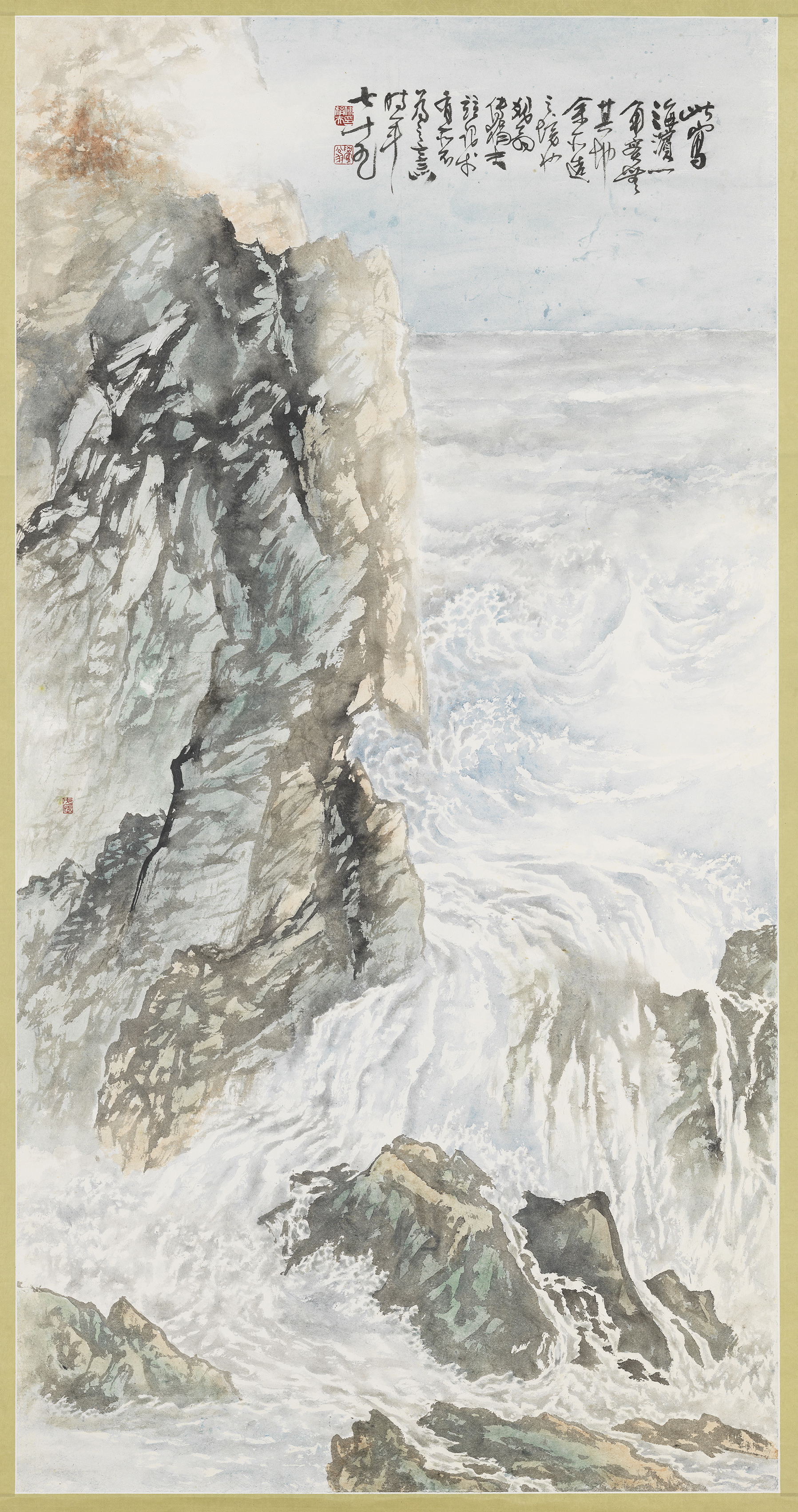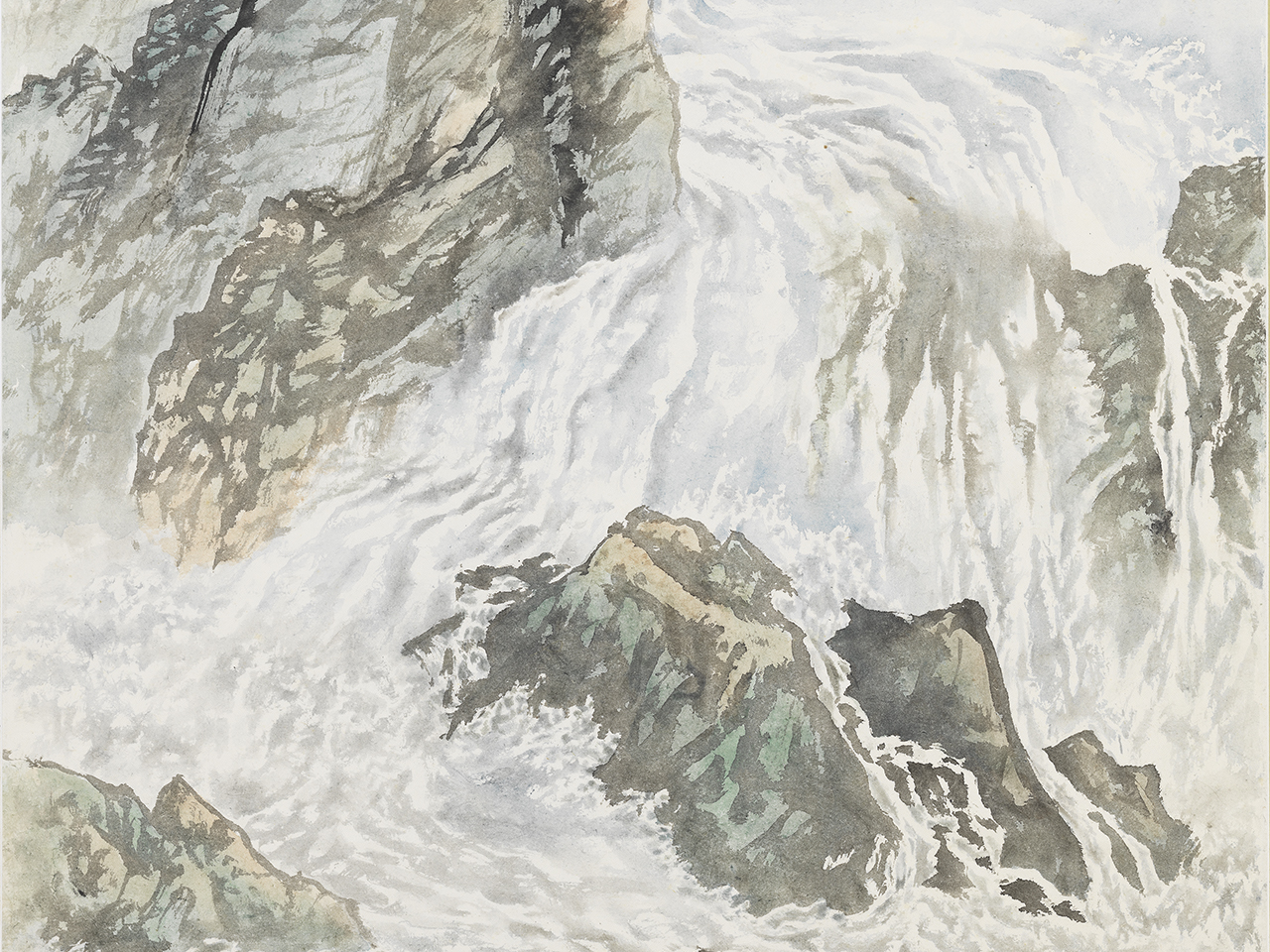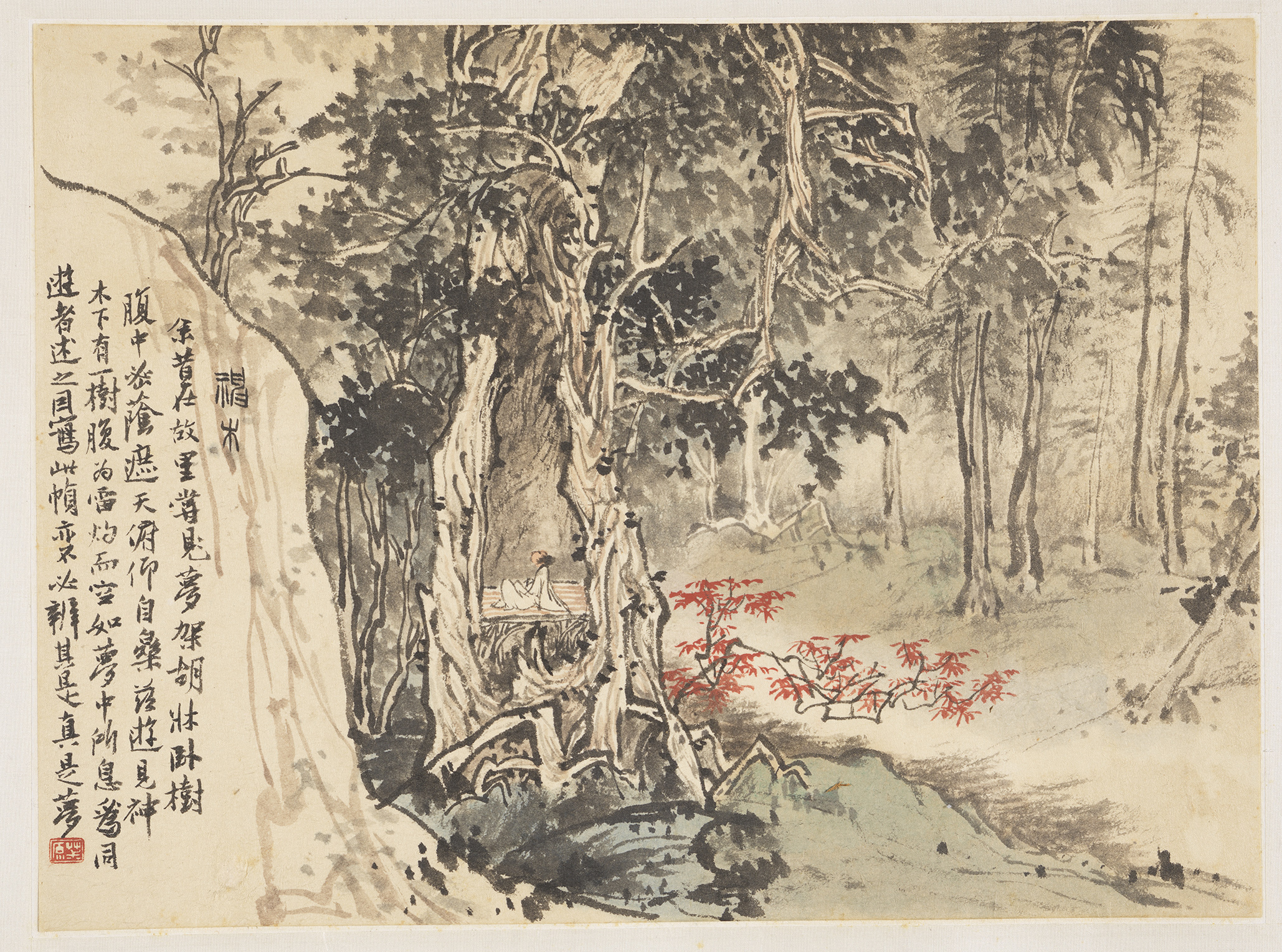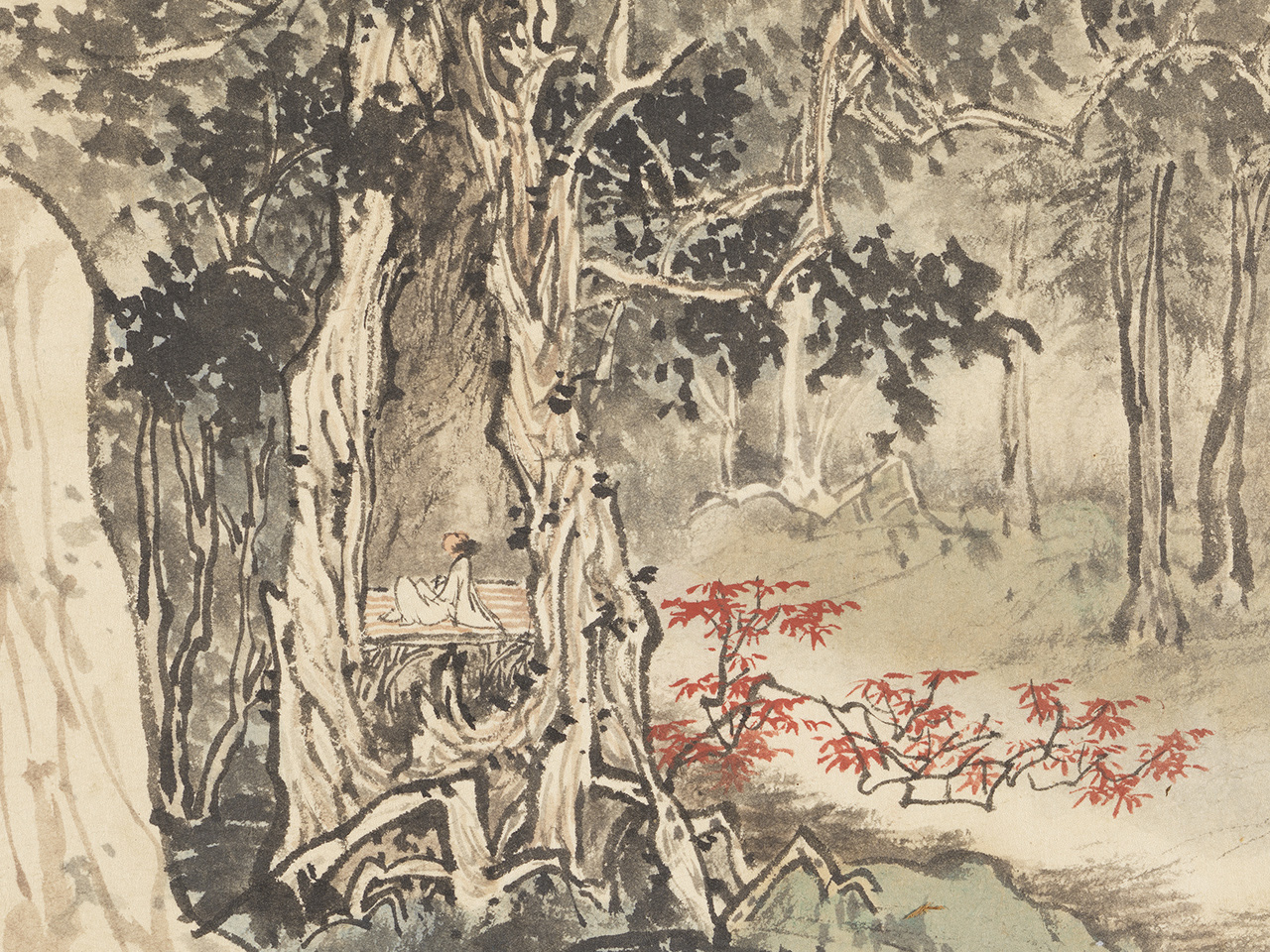Inspired by Scenic Views
The depiction of new scenic views offered opportunities to create new visual schemata. Following the idea of "sketching from life in the methods of the ancients" in the first half of the twentieth century, Fu Chuan-fu (1910-2007) pondered how to develop novel forms of landscape painting brushwork from the natural scenery he observed in Taiwan, from which his "fissuring texture strokes" and "staining methods" were born. Just as classic works of landscape painting can frame our way of viewing nature, the actual scenery itself can also allow the imagination of painters to take flight. Even though the "Divine Tree" at Chitou has already fallen, for instance, it brought back memories of the past for Chiang Chao-shen (1925-1996). Landscape painting was born from nature, and nature was transformed into its compositions and brushwork. Nature and painting, spurred by the practice of painters "To read ten thousand books and to travel ten thousand miles," have continued to engage in and create new forms of dialogue.
-
Scene Along the Coast
- Fu Chuan-fu (1910-2007), Republican period
- 184 x 95 cm
- Donated by Fu Chuan-fu's family
This painting was done in 1988, when Fu Chuan-fu was 79 years old by Chinese reckoning. Fu thought that the brush methods of ancient artists were inadequate to capture the unique qualities of Taiwan's landscape, so he adopted the techniques of "sketching from life" to refine a visual vocabulary that could be used repeatedly. As a result, he created "fissuring texture strokes" to paint rocks and "staining methods" for depicting sea waves. This painting captures the split-second agitation of waves crashing on the shore and also renders the eternity of landscape painting. The brush and ink of waves and rocks fuse together and reduce the realism of the painting. Each stroke of the brush derives from the method of "sketching from life," but at the same time has a "siteless" quality that highlights the beauty of Chinese-style landscape painting.
-
Dream Journey to a Grotto
- Chiang Chao-shen (1925-1996), Republican period
- 24.8 x 33.7 cm
Chiang Chao-shen (style name Jiaoyuan) was born in Shexian, Anhui Province, and went to Taiwan in 1949. He once served as Deputy Director of the National Palace Museum and was a famous painter, calligrapher, and seal carver, being an art historian as well.
This painting is undated, but he noted that he saw a "divine tree" with a hollow center which reminded him of a dream he had in the past. This tree is most likely the one that once stood at Chitou (Xitou) in Taiwan's Nantou County. After Chiang retired, he resided in Nantou and often did paintings of the local scenery there. This work combines both actual and dream scenery, or, as he wrote, "one need not distinguish whether it is real or a dream." In landscape paintings that appear to be views of actual sites, the scenery and creations based on it are indeed often difficult to differentiate.



